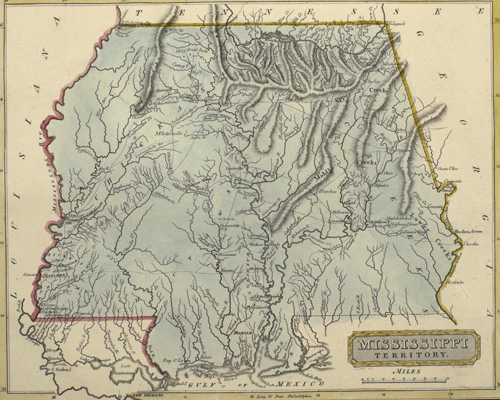Results navigation
2. Mississippi 1817 House of Representatives, Claiborne County
3. Mississippi 1817 House of Representatives, Franklin County
4. Mississippi 1817 House of Representatives, Greene County
5. Mississippi 1817 House of Representatives, Hancock County
6. Mississippi 1817 House of Representatives, Jackson County
7. Mississippi 1817 House of Representatives, Lawrence County
8. Mississippi 1817 House of Representatives, Marion County
9. Mississippi 1817 House of Representatives, Warren County
10. Mississippi 1817 House of Representatives, Wayne County
11. Mississippi 1817 Lieutenant Governor
12. Mississippi 1817 State Senate, Adams County
13. Mississippi 1817 State Senate, Claiborne and Warren Counties
14. Mississippi 1817 State Senate, Franklin and Pike Counties
15. Mississippi 1817 State Senate, Greene, Jackson and Wayne Counties
16. Mississippi 1817 State Senate, Hancock, Lawrence and Marion Counties
17. Mississippi 1817 Territorial Legislature, Adams County
18. Mississippi 1818 House of Representatives, Adams County
19. Mississippi 1818 House of Representatives, Adams County, Special
20. Mississippi 1818 House of Representatives, Amite County
Results navigation

The Mississippi Territory was established on April 7, 1798 from land ceded by Spain to the United States in 1795. The original area comprised about half the present states of Alabama and Mississippi. The size of this Territory grew substantially in 1804 with the cession of land from Georgia, and again in 1812 with annexation of the Mobile District from Spanish West Florida. With this final land acquisition the territory would encompass the entire present day states of Alabama and Mississippi.
Members of the Territorial Legislature were elected by popular vote, but other State and Federal officials were appointed either by the President, Congress or the Territorial Legislature. The first popular election for a Territory Delegate to Congress took place in October 1808.
The first Territorial Governor, appointed by President Adams was Winthrop Sargent, a Federalist from Massachusetts. With the election in 1801 of Thomas Jefferson as President, Winthrop Sargent was replaced by William C. Claiborne, a Republican from Tennessee.
During the term of Winthrop Sargent, Natchez was the Territorial capitol. It was moved to nearby Washington shortly after the appointment of William C. Claiborne, and in 1822 to accommodate the rapidly expanding population; the capitol was permanently moved at Jackson.
By Federal statues of March 1, and 3, 1817, a plan to divide the Mississippi Territory into two separate entities was set in motion. After setting boundaries, the western area began the process of organizing for statehood.
On July 7, 1817 a Convention of 48 delegates convened at Washington, Mississippi to write a State Constitution, which was adopted on August 15, 1817. The first state elections were held on September 1 and 2, 1817. Mississippi was admitted to the Union on December 10, 1817.
Under the State Constitution, future state elections would take place in early August. The Governor and Lieutenant Governor were chosen by popular vote, serving for two years. Members to the House of Representatives were elected annually and State Senators for three years. Local officials like Sheriff and Coroners were also chosen at this time. Various other state officials were chosen by the Legislature. On the federal level, Mississippi’s one Congressman was also elected in August and their Presidential Electors were to be chosen at large by popular vote.
For the first decade of statehood, much of Mississippi was still Indian land, and with the exception of northern Monroe County, which had been cut off from Madison County, now in Alabama, all the organized counties were in the southern part of the state or along the lower Mississippi River.
Although the state was politically Republican, there still may have been some lingering Federalist influence around the Natchez area from the days of Winthrop Sargent. It is interesting to note that in the 1824 election for President, two thirds of the vote for John Adams, came from the five oldest counties in the state, being Adams, Claiborne, Jefferson, Warren and Wilkinson, all of which were along the Mississippi River.
Bibliography
- Bettersworth, John K.
Mississippi: A History. Austin: The Steck Company, 1959. - Bettersworth, John K. and James W. Silver, eds.
Mississippi in the Confederacy. Baton Rouge: Louisiana State University Press, 1961. - Bunn, Mike and Clay Williams, "Capitals and Capitols:The Places and Spaces of Mississippi’s Seat of Government"Mississippi History Now
- Clark, Thomas D. and John D.W. Guice.
The Old Southwest, 1795–1830. Norman: University of Oklahoma Press, 1996. - Cox, James L.
The Mississippi Almanac. Yazoo City: Computer Search and Research, 2001. - Cross, Ralph D., Robert W. Wales, and Charles T. Traylor.
Atlas of Mississippi. Jackson: University Press of Mississippi, 1974. - Gleason, David K., Mary Warren Miller, and Ronald W. Miller.
The Great Houses of Natchez. Jackson: University of Mississippi Press, 1986. - James, D. Clayton.
Antebellum Natchez. Baton Rouge: Louisiana State University Press, 1968. - Lowry, Robert and William H. McCardle.
A History of Mississippi . Spartanburg, SC: The Reprint Company, 1978. - McCain, William D.
The Story of Jackson. Jackson: J.F. Hyer, 1953. - McLemore, Richard A., ed.
A History of Mississippi, Vol. 1. Jackson: University & College Press of Mississippi, 1973. - Rowland, Dunbar.
History of Mississippi. Spartanburg, SC: The Reprint Company, 1978. - ________.
Mississippi Territorial Archives, Vol. 1. Nashville, TN: Press of Brandon Printing Company, 1905. - Sansing, David G., Sim C. Callon, and Carolyn V. Smith.
Natchez: An Illustrated History. Natchez, MS: Plantation Publishing Company, 1995. - Skates, John Ray.
Mississippi’s Old Capitol: Biography of a Building. Jackson: Mississippi Department of Archives and History, 1990. - Sydnor, Charles S.
A Gentleman of the Old Natchez Region: Benjamin L. C. Wailes. Durham, NC: Duke University Press, 1938.






